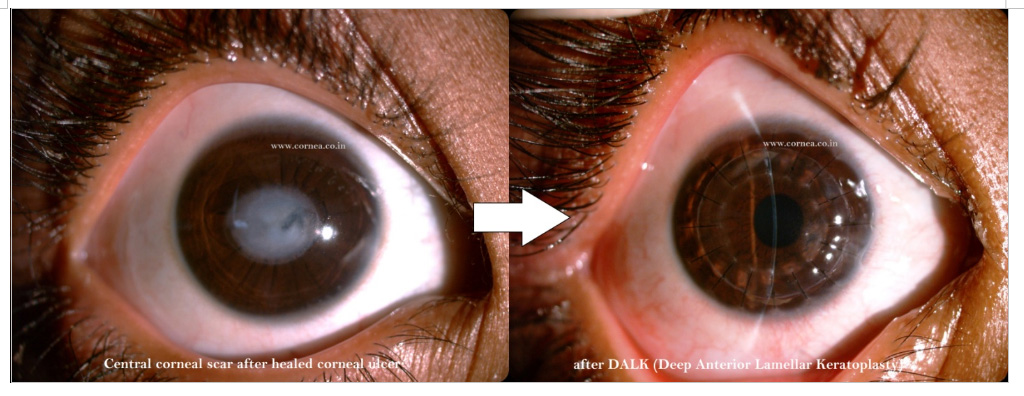1. What is a “Corneal Ulcer”?
A corneal ulcer is a corneal epithelial defect with underlying inflammation due to infection by bacteria, fungi, viruses, acanthamoeba, etc. Corneal ulceration is a serious condition, and with inadequate or no treatment, loss of vision and blindness may occur.
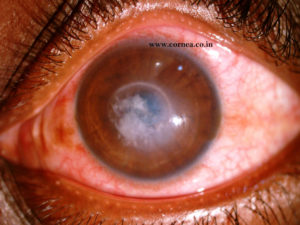
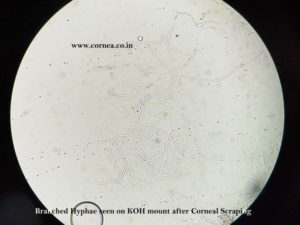
2. What are the symptoms of corneal ulcer?
Pain, watering, itching, redness, pus-like discharge, sensitivity to light are the main symptoms of corneal ulcer.
3. Why do I have so much of pain due to my Corneal ulcer?
Corneal ulcers are extremely painful due to nerve exposure. Immediately after corneal scraping (test for diagnosing the organism causing ulcer), pain may increase, for which you have to take pain-killer tablets. Pain is mostly severe at night. As the ulcer starts healing, pain watering and redness tends to reduce
4. What are the common microorganisms causing corneal ulcer?
Common micro-organisms causing infective corneal ulcer are bacteria, fungi, viruses and protozoa. It is very important to diagnose which organism has caused corneal ulcer, so that medications specific to that particular organism can be prescribed. Diagnosis is commonly done by corneal scraping. The scraped material is kept over slide, stained and viewed under microscope. Scraped material should also be sent for culture to microbiologist.
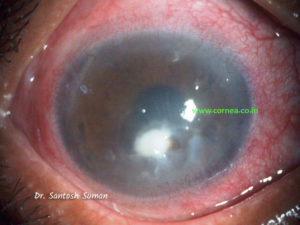
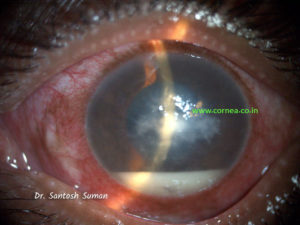

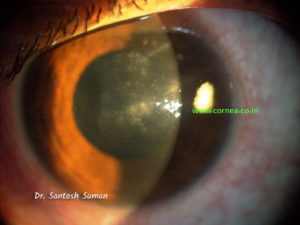
5. How long it will take for my corneal ulcer to heal?
Small corneal ulcers may get healed in a couple of weeks if proper treatment is started early. Fungal corneal ulcers usually take longer time to heal. Some corneas perforate during the course of treatment, which needs Therapeutic Corneal Transplant.
6. What are the probable causes of “Non-healing corneal ulcer”?
Uncontrolled diabetes is the most common systemic cause for non / delayed healing corneal ulcer. Other local causes are Chronic Dacryocystitis (Blockage of the passage of tear drainage), Distichiasis (misdirected eyelashes), Retained foreign body etc.
7. What is TPK (Therapeutic Penetrating Keratoplasty)?
When corneal ulcer is not responding to medical treatment or the cornea is perforated, you may need to get a corneal transplant done to save the eye. Mind you, primary goal of TPK is NOT visual gain, it is done to save the structure of eyeball. If eyeball is saved, you may need other procedures (like Regraft, Cataract extraction etc) for visual rehabilitation later.
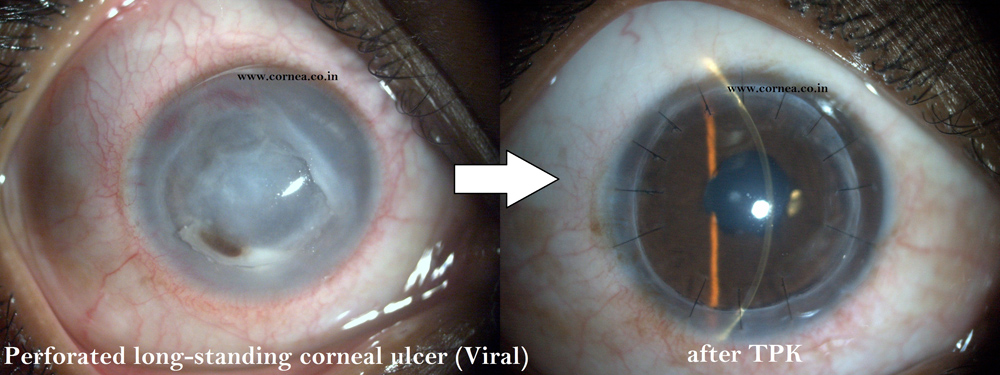
8. Will I get full vision once my corneal ulcer heals?
The purpose of treatment of corneal ulcer is to clear off infection. Once infection is controlled, pain redness watering reduces significantly. Every corneal infection leaves some scar after healing. This scar will cause defective vision. Larger (and denser) scars and the scars which are nearer to visual axis will cause more loss of vision. A peripheral scar may not disturb vision much. According to the density and location of scar, your cornea specialist will suggest you various treatment modalities like Rigid contact lenses, Cornel transplant etc.

